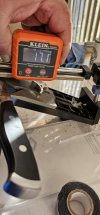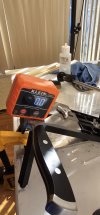David Richardson
Gold Member
- Joined
- Nov 30, 2018
- Messages
- 503
Yes, absolutely light pressure with the matrix stones. I will give the 120 a try. The other EP stones are kind of ok. They work fine on more basic steels. I find that they don't cut high carbide steels well and they wear fairly quickly. I have a set of SiC stones that work nicely.D David Richardson The stock EP 120 is fast but it can take a lot force to get enough pressure, especially on hard steel or wide bevels. If the stone doesn't form some mud you aren't getting the top speed from it. From what I understand the Matrix stones take a light touch. A complication in that comparison.


